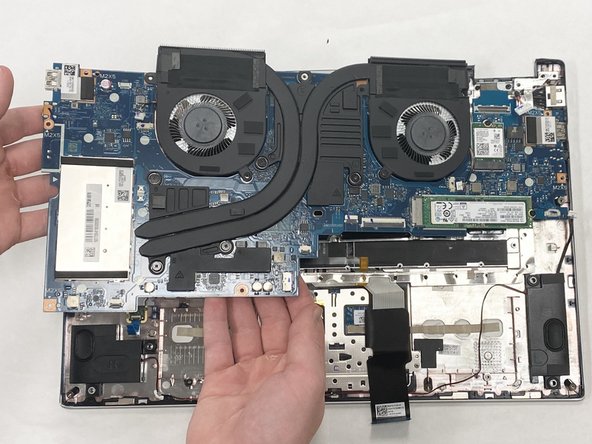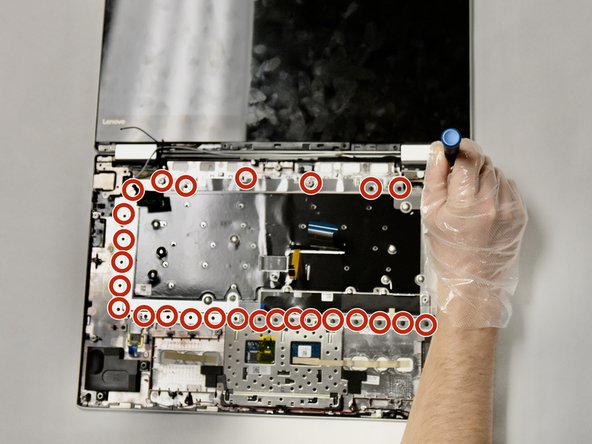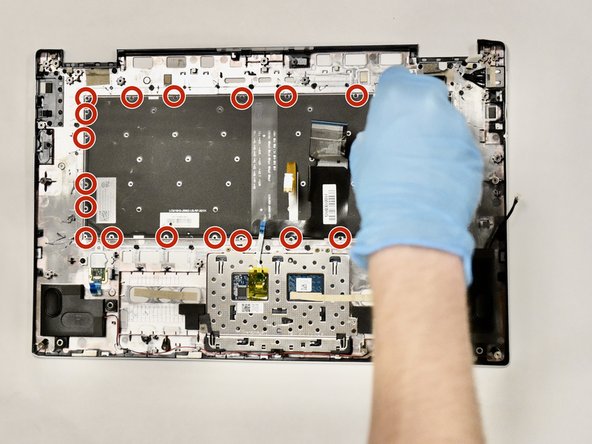Questa versione può contenere modifiche errate. Passa all'ultima istantanea verificata.
Cosa ti serve
-
Questo passaggio è privo di traduzione. Aiuta a tradurlo
-
Power off the device before starting.
-
Flip the device over with the hinges facing away from you.
-
Remove seven 5.0 mm Torx T5 screws.
-
Remove three 9.5 mm Torx T5 screws.
-
-
Questo passaggio è privo di traduzione. Aiuta a tradurlo
-
Pry around the edges from one side to another with a plastic opening tool.
-
Lift the case from the front until you feel resistance.
-
Pull the cover towards you, away from the hinges.
-
Completely lift off the cover.
-
-
Questo passaggio è privo di traduzione. Aiuta a tradurlo
-
Remove the six 5.2mm Torx T5 screws holding the fan in place.
-
Remove the five 5.0mm Torx T5 screws holding the fan in place.
-
-
Questo passaggio è privo di traduzione. Aiuta a tradurlo
-
Disconnect the two fan wire connectors.
-
Carefully lift the fan up and out.
-
-
-
Questo passaggio è privo di traduzione. Aiuta a tradurlo
-
Remove the four 4mm screws surrounding the battery with a Phillips #0 screwdriver.
-
-
Questo passaggio è privo di traduzione. Aiuta a tradurlo
-
Pull firmly on the battery connector to disconnect it.
-
-
Questo passaggio è privo di traduzione. Aiuta a tradurlo
-
Lift the battery out of the case to remove it.
-
-
Questo passaggio è privo di traduzione. Aiuta a tradurlo
-
Using the Phillips #000 screwdriver, remove the five screws.
-
-
Questo passaggio è privo di traduzione. Aiuta a tradurlo
-
Disconnect the power outlet connector.
-
Disconnect the speaker wire connector.
-
Carefully lift the motherboard up and out of the device.
-
-
Questo passaggio è privo di traduzione. Aiuta a tradurlo
-
Using the Phillips #000 screwdriver, remove the 39 welded screws holding the keyboard cover in place.
-
Gently lift to remove the keyboard cover.
-
-
Questo passaggio è privo di traduzione. Aiuta a tradurlo
-
Using the same Phillips #000 screwdriver, remove the 27 welded screws holding the keyboard in place.
-
Gently lift to remove the keyboard.
-
Annulla: non ho completato questa guida.
Altre 3 persone hanno completato questa guida.
5 Commenti
Hi, how did you remove the welded screws from the keyboard?
I agree with john brown, how did you manage to remove the welded screws from the keyboard?
This model of laptop is not designed to allow the keyboard to be removed. A very handy (or very lucky) person might be able to get the welded screws out, but they are not designed to be removed. Additionally, DO NOT REMOVE THE FAN! There are a couple of screws at the back of the fans that need to removed to remove the motherboard, but it is not necessary to remove the whole fan in order to remove the motherboard (and if you do, you would then need to re-seat the fan and mess with applying new thermal paste when doing so).
True that the "welded screws" are...... not really screws at all. We broke off the capped bits that hold the keyboard and cover in place. We then replaced the keyboard and used a glue-gun on each of the "screws" to keep them in place, effectively "repairing" each of the screws we had broken off (/ had "un-capped)".
This works like a charm. It was a few years ago, and I am using it still, including right now :)
Never saw such an insane design in a laptop before. It seemed a bit scary to break off dozens of bits in a laptop, but it wasn't in the end. Don't let this hold you back from repairing your (otherwise) awesome laptop!





















